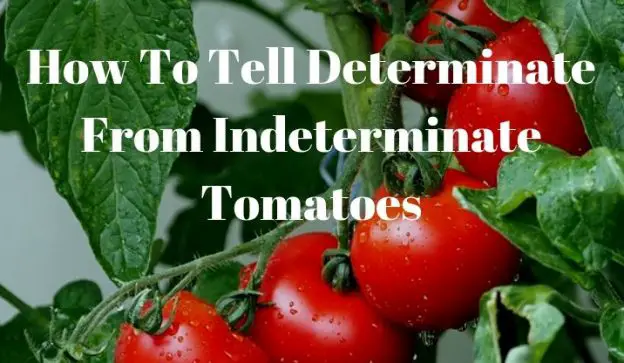I keep getting asked this question, it’s a valid question because they both need to be treated differently. The easiest way to describe how to tell determinate from indeterminate tomatoes is speed of fruiting. Determinate tomatoes usually fruit first but not for as long as indeterminate tomatoes.
How To Tell Determinate From Indeterminate Tomatoes
What Are Determinate Tomatoes
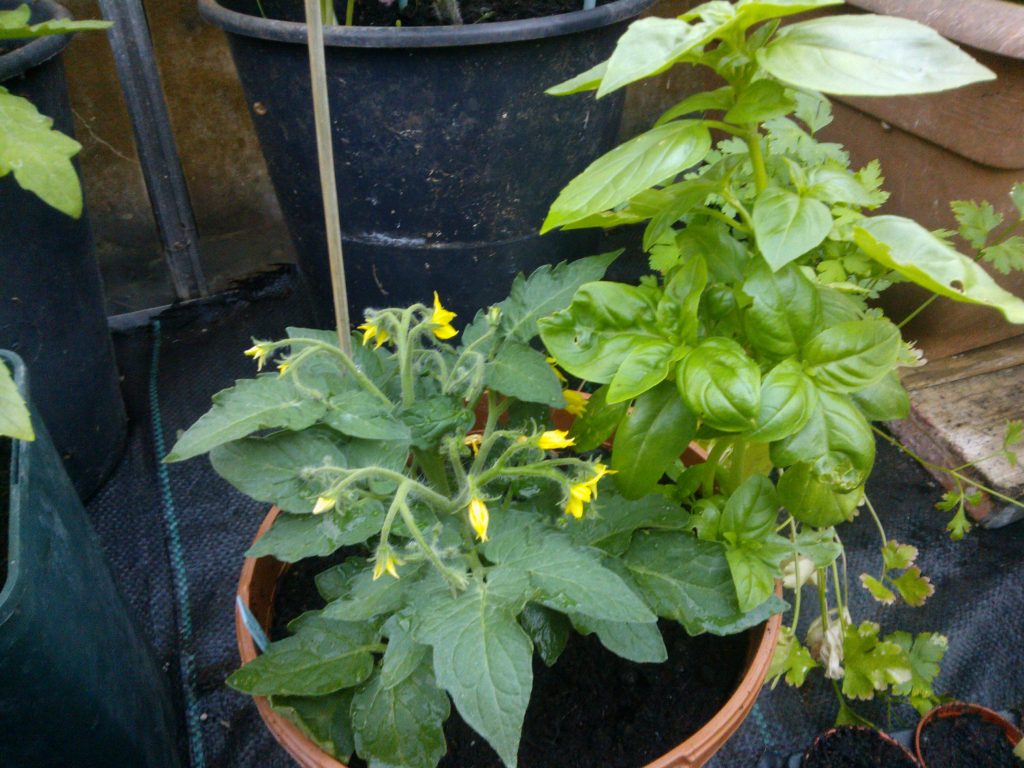
They are often described as dwarf or bush tomatoes and their growth is limited. Determinate tomatoes will only produce one crop of fruit and do not need to have suckers removed (more on this later).
Determinate tomato plants are smaller and don’t grow higher than around 2 feet (60 cms). They produce all their flowers and subsequent fruit at the same time and then stop. So they grow to a certain height, produce a certain amount of fruit and then stop.
So that would be described as determinate- it will reach a determined height and produce a determined amount of fruit.
What Are Indeterminate Tomatoes
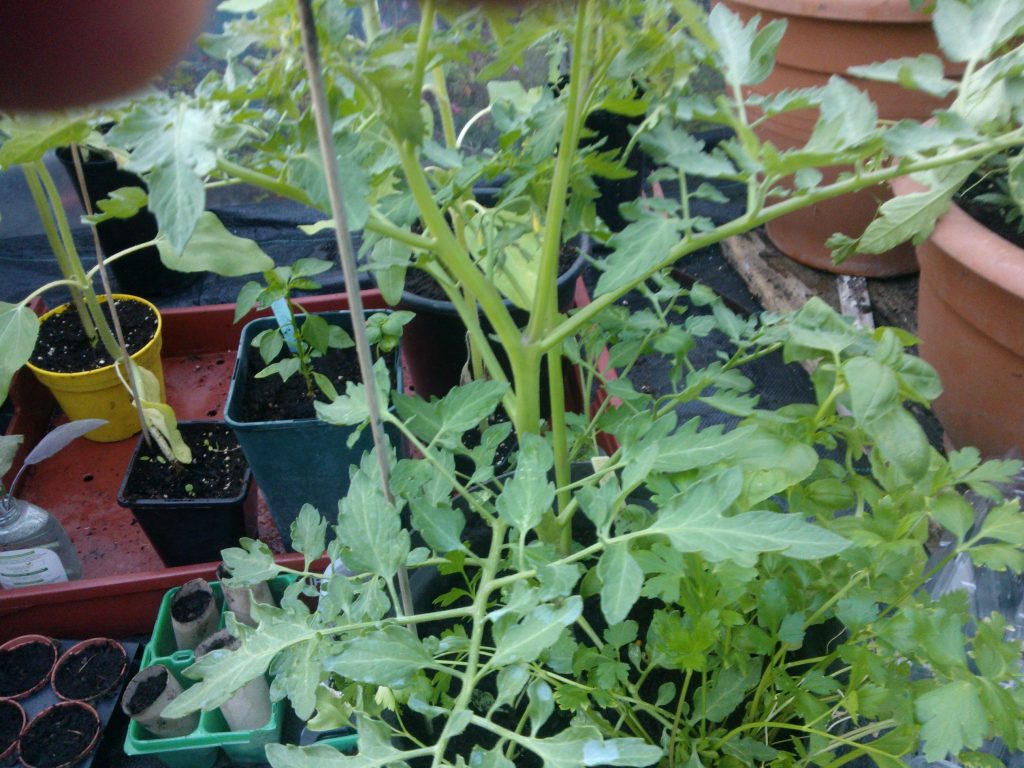
These are the big plants that if left to their own devices would continue to grow larger until checked by frosts. As long as conditions are right they will produce from mid Summer until mid Autumn. They need to have suckers removed and will eventually have to be topped.
To prevent damage to the stalks indeterminate tomato plants will need strong supports and regular tying in. Supports can be long wooden poles, tomato cages or custom built frames. Indeterminate tomatoes will produce plenty of fruit throughout the season and are worth the effort.
Terms Explained
I mentioned a few unfamiliar terms above so let’s clear them up before we continue.
Suckers
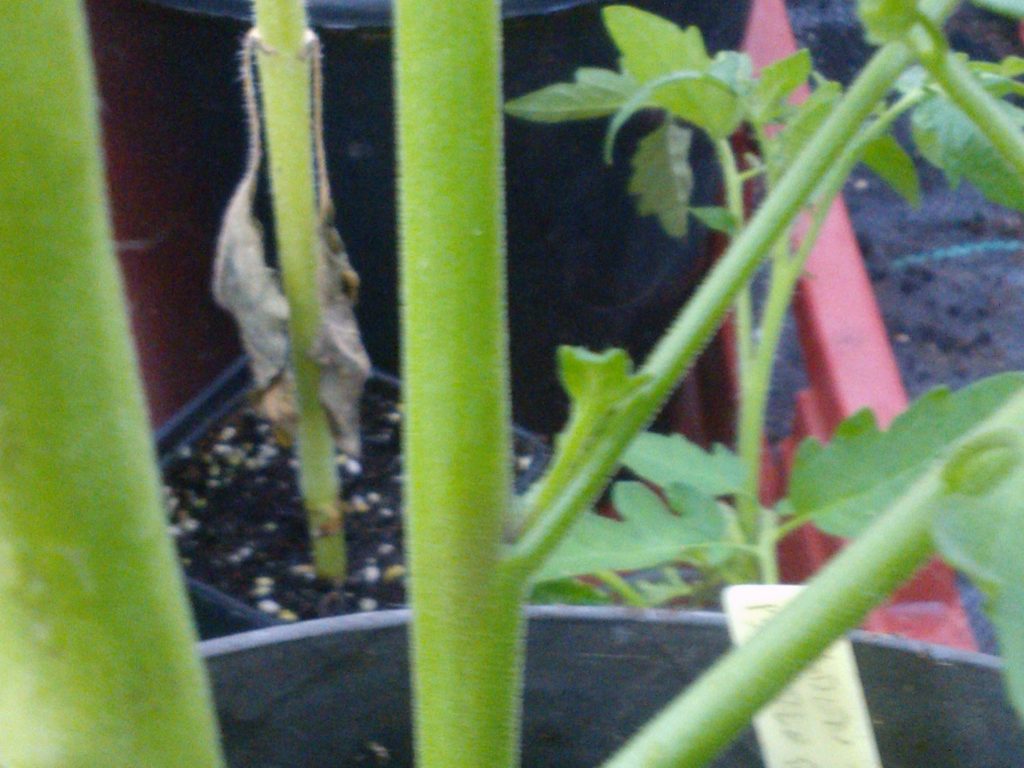
if you imagine the main stalk of the tomato plant is vertical, and the leaf branch is the horizontal. The sucker is the new growth that sprouts from where the joint of these two meet. If allowed to grow it will be another stalk and will produce fruit.
The problem with that is the plant will put all its energy producing more flowers when what we want is the fruit to ripen. See tomatoes originally grow in hot countries where they have extremely long seasons. Where we are growing them we have limited time so we have to control their growth to suit us.
Here’s a quick video I filmed to show you how to remove suckers from indeterminate tomato plants:
So keep one stalk and remove suckers, when small they can be gently pinched off however if you miss one and it gets large use snips. Otherwise you will damage the plant leaving it open to infection.
Topping Tomatoes
Once your indeterminate tomato plants reach the desired height, just cut the tip of the central stalk. This is called topping and will stop the plant from growing upwards any more. As a result of this the plant will grow bushier and spread outwards not upwards.
Beans And Tomatoes
A slightly misleading heading this, but stick with me and it’ll make sense. You could use the same terms for beans, determinate beans are bush beans or dwarf beans. They grow to a determined height, produce all their beans at one time and then stop.
Although if conditions are right you might get a second, smaller crop from dwarf beans.
Indeterminate beans are like pole beans or runner beans. These will keep on growing and continue to produce beans until conditions become too cold. They also need topping to stop growth once the desired height is achieved.
How Many Trusses Should Be Grown On Each Plant
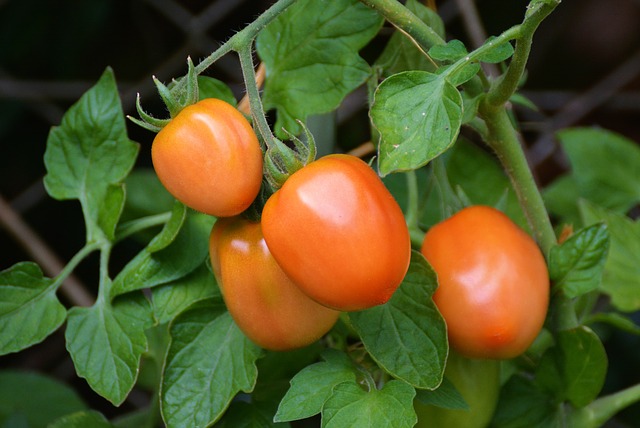
As I said earlier, we have a relatively short time period to get our tomatoes, and the amount of trusses will affect overall production. I find 5 trusses is optimum for fruit production and ripening, but 4 is the reccomended amount.
Trusses
A truss is a group of fruits like a vine, depending on variety this can range from 3 beef toms to 10 cherry toms.
So once the desired trusses have set fruit top the tomato plant and wait for the fruit to grow and ripen.
Pollinating Tomatoes
Tomatoes pollinate in the air or by bees but if there is no air movement and insects are not about you can hand pollinate.
Hand Pollinating Tomatoes
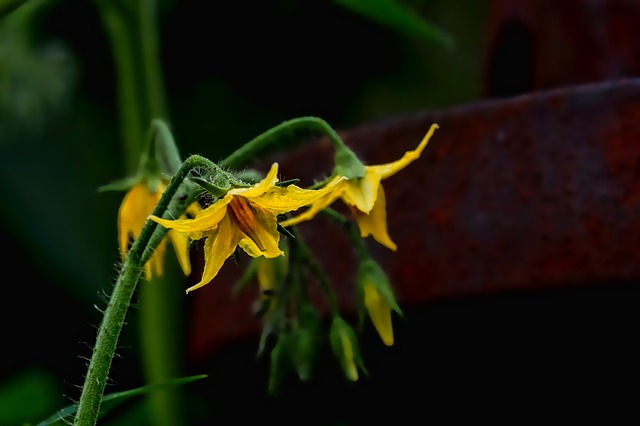
Another one of those technical terms that sounds much more complicated than they actually are. The optimum time for tomato pollen production is midday however any time is better than never. Just gently shake the plant to release the pollen and spread it from flower to flower.
Some people prefer to use a childs paint brush to genly brush on each flower, but I find it’s not necessary with tomatoes. I use the paint brush on squash and cucumbers but shaking the tomato plant gently works well for me.
How To Tell Determinate From Indeterminate Tomatoes Summary
Determinate Tomato Plants
Will grow no higher than 2-3 feet (60-90 cms) tall and will only produce one short spurt of tomatoes, usually early in the season. Determinate tomato plants are compact, bushy looking plants, and the flowers/fruits are grown at the end of a branch.
Indeterminate Tomato Plants
Will continue to grow in height and width until checked by cold weather and frosts, and can reach 10-12 feet ( 3-3.5 metres) in height. The flowers/fruits form on the stem of the plant and unless they are pruned will continue to form new growth until frosts come. Inderterminate tomato plants continue to produce flowers/fruit all season but will need controlling to achieve a crop in cooler climes.
The main reasons for removing suckers are to stop the plant wasting energy trying to produce new growth and concentrate on the fruit already produced. To prevent diseases like mildew which is easily prevented if air circulation is improved and this is also why the bottom leaves should be pruned.
Any pruning of tomato plants should only be done in dry conditions to prevent the spread of diseases. Another reason for pruning the bottom leaves is to prevent water splashing up from the soil because this is where blight spores are.
Tomato Blight
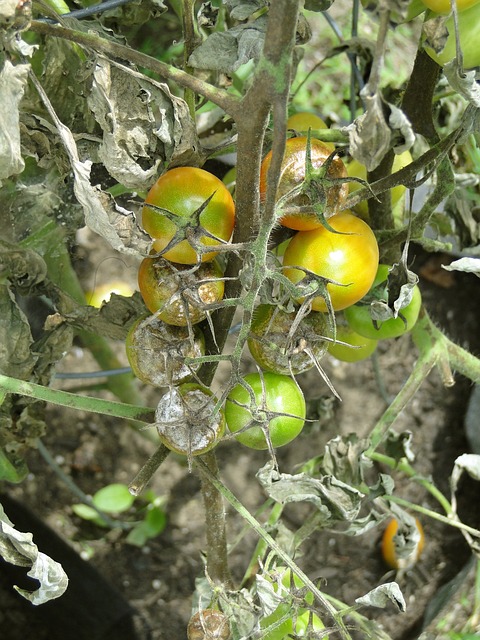
This common tomato problem is caused by blight spores which can travel very large distances on wind and rain. They multiply in moist humid conditions and can affect potatoes and tomatoes. Mainly found on outdoor tomatoes as greenhouse plants are less likely to be exposed to these spores.
It is best practise to remove lower leaves from tomato plants and to water from below,never water tomatoes from height. Keep leaves and stalks as dry as possible to reduce the risk of infection.
Links
For more information onhow to grow the tastiest tomatoes click here.
To find out what not to plant with tomatoes click here.
For general information on companion planting tomatoes click here.
To go to the RHS link on blight click here.

